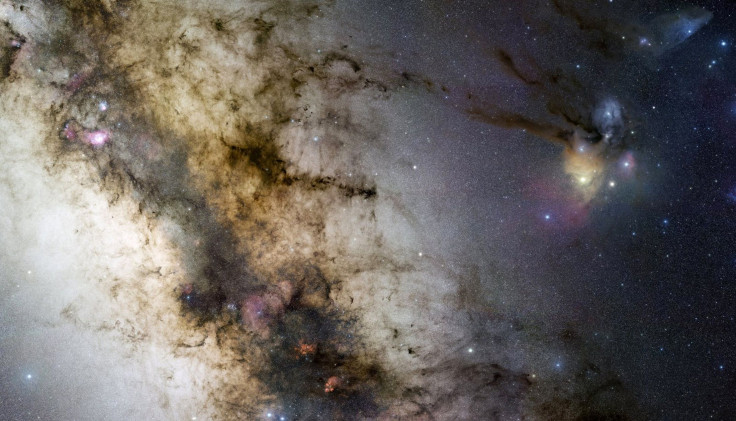Milky Way Galaxy Has Four Spiral Arms, A 12-Year-Long Study Of Massive Stars Reveals

A 12-year-long study, conducted by researchers at the University of Leeds in UK's West Yorkshire county, has revealed that the Milky Way galaxy has four spiral arms, a finding that's contrary to the years of debate sparked by images taken by NASA's Spitzer Space Telescope, which showed only two arms.
The new research, published Tuesday in the Monthly Notices of the Royal Astronomical Society, is part of the Red MSX Source, or RMS, survey by academics at the university to investigate the galactic distribution of recent massive star formations. According to the study, astronomers cannot see what the Milky Way looks like because Earth and the people in it are on the inside, looking out. However, they can assume its shape by observing its stars and their distances from Earth.
“The Milky Way is our galactic home and studying its structure gives us a unique opportunity to understand how a very typical spiral galaxy works in terms of where stars are born and why,” Melvin Hoare, a co-author of the research paper and a member of the RMS survey team, said in a statement.

Unlike earlier attempts, in the 1950s, to map the Milky Way by focusing on clouds of gas in the galaxy where new stars are born, NASA's Spitzer searched the galaxy for infrared light emitted by stars. In 2008, it was announced that Spitzer had discovered about 110 million stars, but only found evidence of two spiral arms.
As part of the new research, the astronomers used several radio telescopes in Australia, the U.S. and China to individually observe about 1,650 massive stars, which had been identified by the RMS survey. The astronomers calculated the distances and brightness of the massive stars to reveal a distribution across four spiral arms.
“It isn't a case of our results being right and those from Spitzer's data being wrong – both surveys were looking for different things,” Hoare said. “Spitzer only sees much cooler, lower mass stars – stars like our Sun – which are much more numerous than the massive stars that we were targeting.”
According to the astronomers, massive stars are much less common than their lower-mass counterparts because the former only live for a short time. Their shorter lifespan means that they are only found in the arms in which they formed, which could explain the discrepancy in the number of galactic arms of the Milky Way that different researchers have claimed.
“The gravitational pull in the two stellar arms that Spitzer revealed is enough to pile up the majority of stars in those arms, but not in the other two,” Hoare said. “However, the gas is compressed enough in all four arms to lead to massive star formation.”
© Copyright IBTimes 2025. All rights reserved.




















